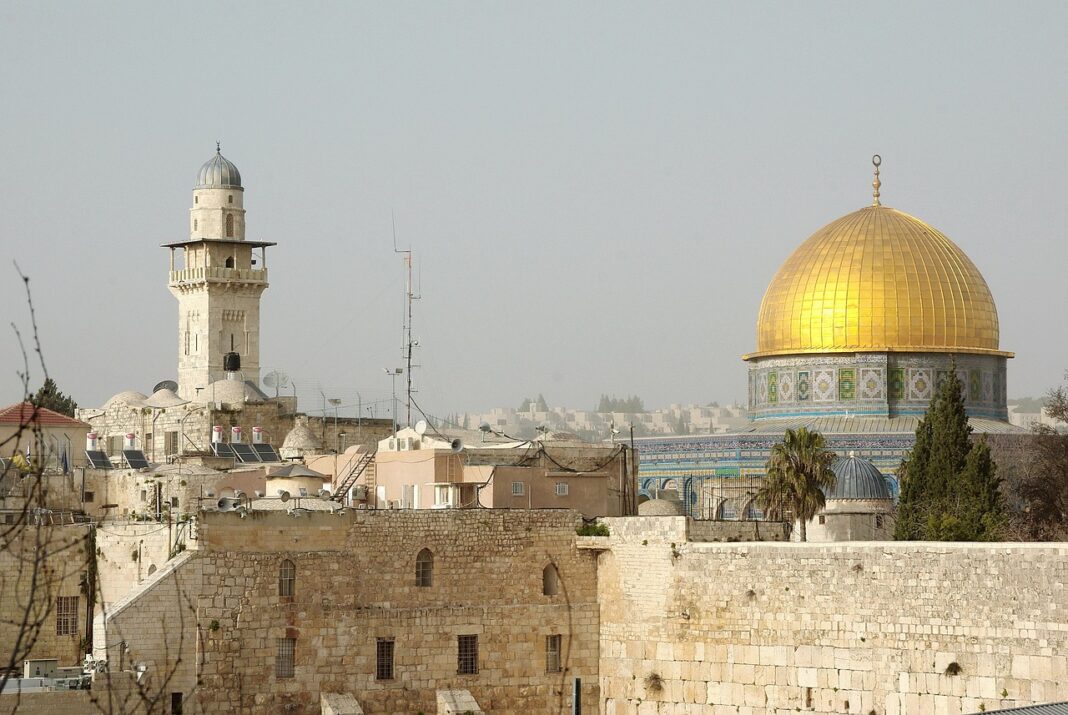The war in the Middle East is now in uncharted waters
By Eleni Vasiliki Bampaliouta
20 days ago, completely suddenly for us Westerners, a powerful conflict broke out in a few hours that ended in a bloody war. That of Israel and Palestine. Once again, the same scenario is repeated in the same project with the same results, mainly for the civilian population. People and their families who have lost their lives, people who, through no fault of theirs, are tortured, raped, babies of all ages dying or being orphaned. Witness an ancient Greek tragedy….
The new crisis in the Middle East, after the terrorist strike by Hamas against Israel, is in full swing, as if it is the continuation of the Arab Spring that started in 2010 in Tunisia and continued two years later with the war in Syria, which is still ongoing. Extraordinary events confirm that we are moving in uncharted waters. Major analysts of geopolitical and geostrategic science, with a heavy resume and experience in analysis, believe that we are now in a period of non-solution for the Palestinian issue. When efforts were made under much better circumstances in the seven-year period 1993-2000, the decisive step towards the creation of two states was ultimately not taken.
With today’s facts and the evolution of the problem from the second Intifada (Arabic word meaning resistance or rebellion) until today, there can only be hope for a temporary freeze in the conflict, not for a warm peace. So let’s see together in detail how the situation is in order to fully understand the historical and geostrategic side of the region as well as the mentality of the movements here and there.

The main “thorns” between Israelis and Palestinians
Israel will have to manage the threat of escalation in two key areas. The first is its northern border with Lebanon and Syria. Hezbollah already appears to be testing Israel’s limits in the region, firing rockets and shelling the Golan Heights. The situation on the border is uncertain and could change quickly. The second is the West Bank, where Hamas has explicitly called on militants to take up arms. The area is ripe for major upheaval. Even before the attacks, violence in the West Bank was escalating to the point where analysts were talking about a Third Intifada.
The two sides have many open fronts, but four of them are considered the big thorns of the perennial conflict.
Two-state solution: This is a scenario that would allow the creation of a Palestinian state in the West Bank and Gaza Strip, next to Israel.
Hamas rejects the two-state solution and vows to destroy Israel.
In turn, Israel argues that any Palestinian state should be demilitarized so as not to pose a threat.
Settlements: Most countries consider Jewish settlements built in Israeli-occupied territories since 1967 illegal. Understandably, Israel does not accept this position, arguing that it has historical and biblical ties to the land. The growth of these settlements at regular intervals is one of the most important disputes between Israel, Palestine, and the international community.
Jerusalem: The Palestinians want East Jerusalem, home to holy sites for Muslims, Jews, and Christians, to become the capital of their state. Israel, in turn, maintains that Jerusalem should remain “its undivided and eternal capital.”
The international community does not recognize this position of Israel.
The then US President Donald Trump set the Middle East on fire in 2018 when he recognized Jerusalem as the capital of Israel, moving the US embassy there as well.
Refugees: There are an estimated 5.6 million Palestinian refugees, mostly the descendants of those who fled Gaza in 1948. They live mainly in Jordan, Lebanon, Syria, the occupied West Bank, and Gaza.
About half of the registered refugees remain nomads, according to the Palestinian Foreign Ministry, with many living in crowded camps. However, they do not have the right to return, a constant demand of the Palestinians. Israel, however, in turn, says that any resettlement would have to take place outside its borders.
Extremist Organizations
The Palestinian Islamic Jihad is the second-largest militant group in the Gaza Strip and is supported by Iran. It is “close” to Hamas in terms of Islamist ideology. It also aims to destroy the state of Israel and has declared itself on the side of Hamas after the terrorist organization invaded Israeli soil on October 7.
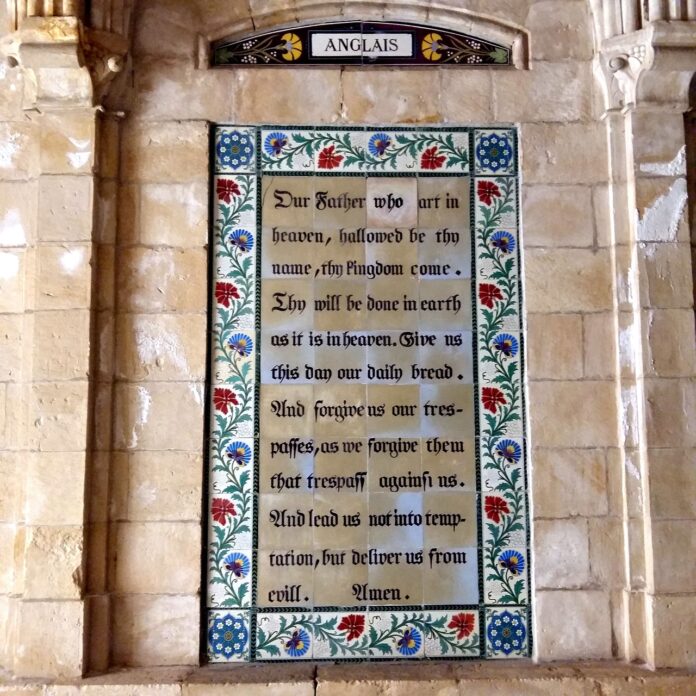
Hezbollah is a Lebanese Shia Islamist organization that is also supported by Iran. Recently, after the attack by Hamas, the military arm of the Shiite movement has exchanged fire several times with the Israeli army on the northern border of the country.
Although Hezbollah’s involvement in the conflict is limited so far, there is concern that a possible Israeli ground invasion of the Gaza Strip would provoke a more active response from Hezbollah and escalate the conflict to a regional war. For many analysts, the extent of Israel’s violence and the duration of its operations in Gaza will determine Hezbollah’s response.
It is worth noting that until now, while the fighters of the Lebanese movement are clashing with Israeli troops along the border, Nasrallah has not taken a position publicly, which only adds uncertainty to the situation.
The action of Hamas and its relations with Turkey
Since then, Hamas has continued its activities, systematically fanaticizing the people and provoking a war every time we come close to an agreement. They have caused seven wars in 18 years. After 2008, they have caused five major wars (2008, 2012, 2014, 2021, and the current one).
- In 2014, in the 51-Day War, Hamas fired 4,481 rockets at Israel. After the war ended, Israel discovered twenty secret tunnels. This was followed by the Israel
- Hamas agreement on August 26, 2014. A new agreement followed in 2020, while on May Day 2017 Hamas had accepted a Palestinian state within the 1967 borders and on October 14, 2022, signed the reconciliation agreement in Algiers. In other words, Hamas violates its own agreements. And she does not hesitate to execute her own people for “treason”. In 2022, Hamas hanged 17 Palestinians. Note also that the Algiers Agreement called for elections to be held in October 2023. Coincidentally, it was in October that Hamas carried out its terrorist attack. Why does he not want elections, which have been held since 2006! And which Fatah also prevents, fearing that Hamas will falsify the result.
- August 25, 2020. Erdogan meets with the leadership of Hamas in Istanbul. It is known that Turkey gives passports to members of Hamas. After all, the relationship between Turkey and Israel fluctuates, but in the end, the balance is always in favor of Hamas. In 2016 there was a restoration of relations, but in 2018 Erdogan called Israel a “terrorist state” and an “apartheid state” and the ambassadors were expelled. On August 17, 2022, we had relations restored again.
- In May 2021, in the 11-Day War, the bloodiest since 2014, Hamas fired 4,700 rockets. 260 dead, among them 66 children. It was preceded, in September 2020, by Israel’s agreement with Bahrain and the United Arab Emirates. With Erdogan declaring that “History will not forget” and Iran calling it dangerous and illegal.
- In April 2023, the incidents at the Al-Aqsa Mosque took place. Rockets are being fired at Israel from Lebanon. Israel strikes southern Lebanon.
- In May 2023, in the 5-Day War, the Islamic Jihad also took part.
- In July 2023, Abbas and Haniyeh met in Ankara, in the presence of Erdogan.
- New episodes and demonstrations in September 2023.
They get help from Qatar, Russia, China, and Iran
According to information released by senior Hamas officials, their group had been preparing for two or three years. At various levels, the military leadership prepared the plans and information about how the enemy works, where the military formations are located. They consider the October 7 attack to have been an “act of defense.” They are looking to get help from anyone to maintain their organization. This help can be financial. For example, they get a lot of financial support from Qatar. Diplomatic and political support from Russia and China. They get military support and training from Iran. Humanitarian aid from Egypt. It depends on who wants to help. If anyone wants to help financially, they are welcome. Politically, diplomatically, or militarily, he is also welcome.”
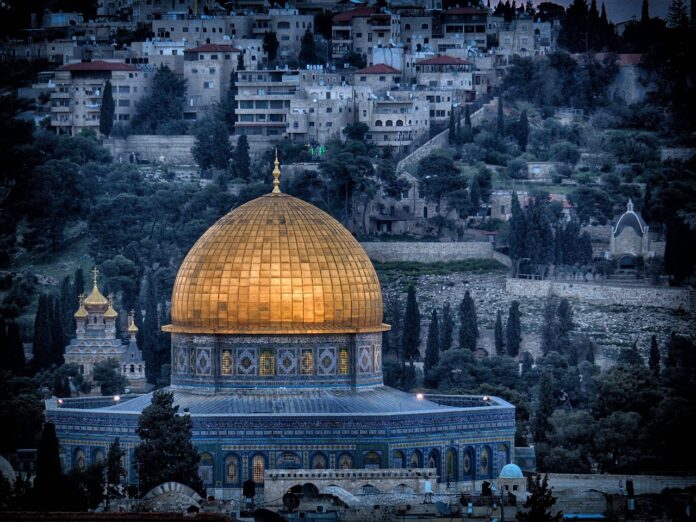
Hezbollah
It was founded in 1982 by the “Islamic Revolutionary Guards,” a part of the Iranian army, and is financially supported by Iran itself, while political support is also provided by Syria. Hezbollah was considered by many Western countries as a terrorist organization. The EU classifies Hezbollah’s military wing as a terrorist group, but not its political wing. Hezbollah is the most powerful group in Lebanon due to a heavily armed militia that has fought several wars with Israel. It is a political movement and a guerrilla army, drawing its support from Lebanon’s Shiite population.
Specifically, in 2005, the paramilitary organization entered Lebanese politics more visibly after the assassination of al-Hariri and the withdrawal of Syrian troops from Lebanon. A coalition of anti-Syrian factions took power after the election giving Hezbollah 14 seats in the 128-seat parliament. In 2011, the Syrian civil war leads to years of political paralysis in Lebanon. In January of the same year, the first government of Saad al-Hariri, son of Rafik al-Hariri, was overthrown when Hezbollah and its allies resigned from the UK-backed court. Six months later, Prime Minister Najib Mikati announced a government dominated by Hezbollah and its allies.
The group’s rise in power came after joining the war with Syria in 2012 in support of President Bashar al-Assad. The group and its allies helped form Lebanon’s current government. Hezbollah’s arsenal has been a major bone of contention. The paramilitary group says its weapons are needed to deter Israel and, more recently, to protect itself from Islamist rebels in Syria.
Hamas and Arab countries
Between Israel and Hamas, the Arab countries that have established diplomatic relations with the Jewish state in recent years are called upon to play the role of a balancer in order not to displease either their new partner or the Arab public opinion that sides with the Palestinians.
But their position risks becoming increasingly uncomfortable with Israel’s expected long-term and highly lethal bombing campaign on the Gaza Strip, analysts say.
The day after the Islamist group that rules Gaza attacked Israel, the United Arab Emirates, the first Gulf country to establish diplomatic relations with Israel in 2020 under the Abraham Accords, differed from its Arab partners in sharply condemning the Hamas attack.
The countries that have signed the Abraham Accords – the United Arab Emirates, Bahrain and Morocco – have “narrow enough” room for maneuver so as not to jeopardize their relationship with Israel, nor to displease the pro-Palestinian Arab community opinion. They are in a “very uncomfortable” situation and are currently focused on protecting civilians. In Bahrain and Morocco, which were also content to report civilian casualties, demonstrations in support of the Palestinians were held in the first days of the offensive.
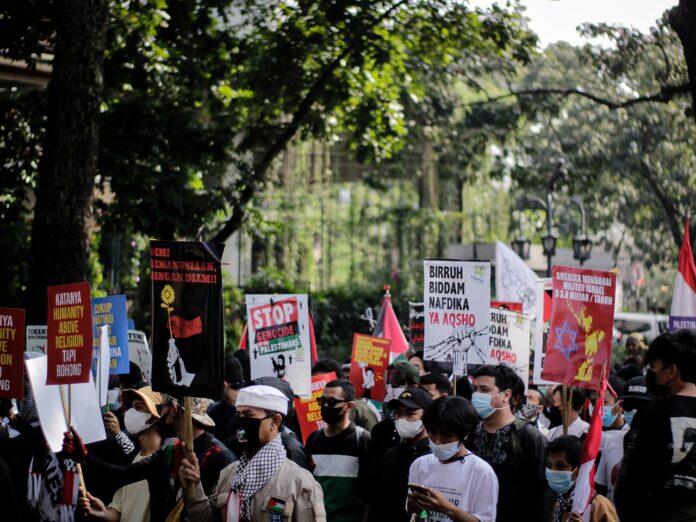
Egypt and Jordan refuse new refugees from Palestine
Egyptian President Abdel Fattah el-Sisi said today’s war is not only aimed at fighting Hamas, “but also an attempt to immigrate Palestinians to Egypt.”
The refusal of Egypt and Jordan is based in part on the fear that Israel wants, through the expulsion of the Palestinians in these countries, to nullify the long-standing demand for a Palestinian state. The two countries, which border Israel and share borders with Gaza and the occupied West Bank respectively, have strongly denied it. Jordan already has a large Palestinian population.
At the same time, Egypt says a mass exodus from Gaza would bring Hamas or other Palestinian militants into its territory. That could destabilize Sinai, where the Egyptian military has fought for years against jihadists it has accused Hamas of supporting.
Egypt has supported Israel’s blockade of Gaza since Hamas took power in the region in 2007, tightly controlling border crossings. It also destroyed the network of tunnels used by Hamas and other Palestinians to smuggle goods into Gaza. At the same time, Egypt says a mass exodus from Gaza would bring Hamas or other Palestinian militants into its territory.
Egypt, however, expresses concerns. Sisi said the fighting could last for years. He proposed that Israel house Palestinians in the Negev desert, which borders the Gaza Strip, until it ends its military operations.
Israel and Turkey relations
The tension in Turkey’s relations with Israel dates back to 2010, when Ankara expelled the Israeli ambassador, following a deadly attack by Israeli commandos on a Turkish ship carrying humanitarian aid to the Gaza Strip.
Diplomatic relations were restored in 2016, but two years later there was a fresh rift over Israeli military operations in Gaza that killed around 50 Palestinians.
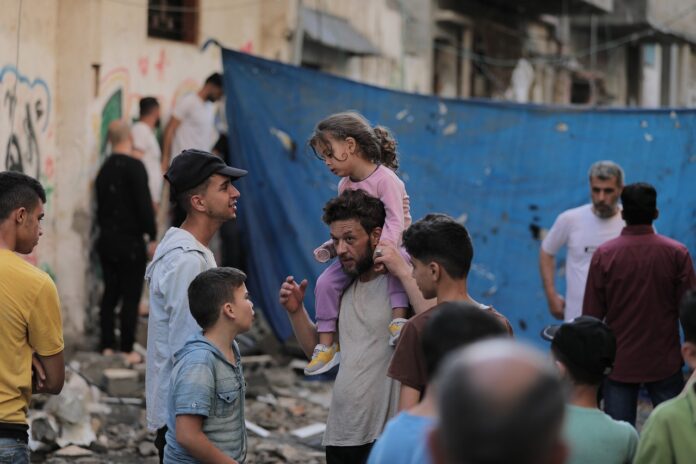
Israel and Iran relations
An ally of Israel during the time of the Shah, Iran turned after the Islamic revolution of 1979 into the number 1 enemy of the Jewish state. Shortly after the establishment of Israel in 1948, the Shah of Iran maintained close relations with the new state. Iran is home to the largest Jewish community in the Middle East.
Israel has a significant diplomatic mission in Iran, imports 40% of its oil needs and exports weapons, technology and agricultural products.
The eponymous Savak (the political police of the Iranian regime) was founded in 1957 with the help of the American CIA and the Israeli Mossad.
In 1979, with the establishment of the Islamic Republic, Iran broke off all official relations with Israel, which is not officially recognized by Tehran. However, trade relations are maintained informally.
In 1980, the Iranian-inspired Islamic Jihad evolves into the largest Islamist Palestinian organization to take up arms against Israel. However, during the Iran-Iraq war (1980-88), Israel delivered to Tehran about 1,500 missiles. The transaction is revealed in the context of the case of the sale of American weapons to Iran (Irangate), aimed at the release of American hostages held in Lebanon.
Israel and Lebanon relations
Lebanon has traditionally been an important trade hub for the Middle East with intense commercial activity. The once “Paris of the Middle East” has been at the center of conflict more than once, despite its small size, due to its borders with Syria and Israel and its uniquely complex community composition. Shia Muslims, Sunni Muslims, Christians and Druze are the main population groups in a country that has been a haven for the region’s minorities for centuries.
Lebanon’s relations with Israel have been characterized by ups and downs over the years and by a series of events. Lebanon formally participated in the 1948 Arab-Israeli war against Israel, but Lebanon was the first nation to express a desire for an armistice treaty with Israel in 1949. The most turbulent period in bilateral relations was the 1970s and 1980s, after the Lebanese civil war. During the early years of the war, Israel allied with Christian Lebanese militias.
The countries effectively normalized relations with the May 17 agreement brokered by the US in 1983, but it was annulled by Lebanon after Druze and Shiite militias seized power in early 1984. Israel also supported the separatist state of Lebanon during the period 1979-1984. Even today Israel treats Lebanon as an “enemy state”. Israeli citizens or any other person holding a passport with Israeli stamps or visas issued by Israel are strictly prohibited from entering Lebanon and may be subject to arrest or detention pending further verification. As recently as 2008, a survey by the Pew Research Center showed that 97% of Lebanese have a negative opinion of Jews.
Additionally, the 2006 Lebanon war added to their hostile relations. It was a 34-day war in northern Israel and Lebanon. The parties involved were Hezbollah and the Israel Defense Forces (IDF). The Hezbollah-instigated Operation True Promise began in July 2006, taking its name from a “pledge” by Sheikh Hassan Nasrallah to capture Israeli soldiers and exchange them for three Lebanese prisoners held by Israel.
In 2010, Israel discovered natural gas in the Israeli EEZ that stretches into the Mediterranean Sea. Lebanon opposed any exploration considering that natural gas extends to its limits. Israel had already begun exploration and construction on its side, while Lebanese authorities have yet to officially demarcate their exclusive economic zone or begin any process of soliciting bids for exploration rights. As recently as August 17, 2010, the Lebanese parliament passed a law allowing the exploration and drilling of offshore oil and gas fields. The dispute over the boundaries of the EEZ between Israel and Lebanon continues to this day highlighting the complex geopolitical and diplomatic landscape of the Eastern Mediterranean.
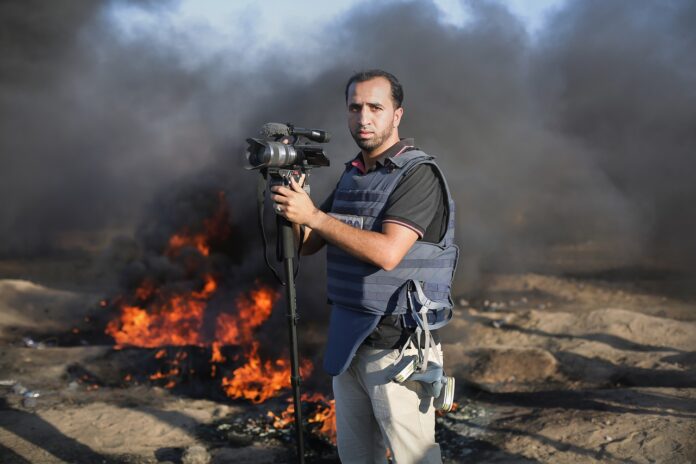
Historical review of Israel-Palestine relations
- 1920 – 1973: Four wars, Black September, hijackings
- 1920. The San Remo Peace Conference gives Great Britain the mandate for the Land of Israel and Transjordan.
- 1921. Great Britain decides on the secession of Transjordan.
- 1923. It is officially decided to change the mandate (Churchill).
- 1946. Syrian independence.
- 1947. Great Britain returns mandate for Palestine to OHE.
- 1948. The State of Israel is founded with Ben Gurion as the first President (May 14). Immediately the first Arab-Israeli War breaks out, with the invasion of Syria. Israel wins the war. OHE envoy Count Mpernadot is murdered.
- 1949. Bilateral armistice agreement with Jordan. The area west of the Jordan is given to Jordan and the Gaza Strip to Egypt.
- 1956. Suez Crisis. Israel attacks Egypt which is defeated. The port of Eilat, vital for Israel, opens again.
- 1966 – 1967. Border incidents and development of Al Fatah action. After the removal of OHE from the Gaza Strip, Saudi Arabia closes the port of Eilat again. In Israel, Defense Minister Moshe Ntayan is sworn in. In June, the third Arab-Israeli war, the Six-Day War, breaks out, pitting Israel against Iraq, Lebanon, Saudi Arabia, Syria, and Jordan. Israel gains and keeps the territories it occupied: Gaza Strip, Sinai, West Bank, Golan Heights.
- 1970. Black September. Palestinians are expelled from Jordan.
- 1969 – 1974. Prime Minister Golda Meir. Al Fatah continues its activities with hijackings and bombings. In October 1973, the fourth Arab-Israeli war broke out, the Yom Kippur War. Israel is taken by surprise, but manages to repel the Egyptian forces.
- 1976 (June, July). Hijacking of an Israeli plane en route to Entebbe, Uganda. Successful Israeli operation to free the hostages.
- Sabotaging agreements and murdering peacemakers
- 1979. Signing of the Camp David Accords with Begin and Sadat and return to Egypt of the Sinai Peninsula.
- 1981. Assassination of Egyptian President Sadat, who had previously shared the Nobel Peace Prize with Israeli Prime Minister Begin.
- 1982 (June). Operation “Peace in Galilee”. Israeli army intervention in South Lebanon. The Palestine Liberation Organization is moving its headquarters to Tunisia. The extremist organization Hezbollah is founded. In September, under Ariel Sharon, there is a massacre in the Palestinian camps of Shabra and Shatila. Conflicts begin in the occupied territories.
- 1985. The Israeli air force destroys the Palestinian headquarters in Tunisia.
- 1987. First Palestinian Intifada in the occupied territories and its bloody repression.
- 1988. The Palestinians declare an independent state in Transjordan and recognize the State of Israel.
- 1991. Madrid agreement for peace in the Middle East.
- 1993. Oslo Accords and signing in Washington by Yitzhak Rabin and Yasser Arafat of the Declaration of Principles providing for a state of autonomy in the Gaza Strip and the West Bank.
- 1994. Rabin, Arafat and Peres share the Nobel Peace Prize. In the same year, the Gaza and Jericho Agreement is signed and Arafat returns to the Occupied Territories.
- 1994. Signing of peace agreement between Israel and Jordan.
- 1995. Agreement for the return of the cities of Bethlehem, Jenin, Nablus, Qalqiyya, Ramallah, Tulkarem, part of Hebron and 450 villages. Murder of Yitzhak Babin.
- 1996. The terrorist activity of Hamas puts the Palestinians in a difficult position again. Netanyahu is elected Prime Minister of Israel. In September, the Intifada returns fiercer.
- 1997. Agreement for the return of 80% of Hebron.
- 1998. Arafat – Netanyahu agreement, in the presence of Clinton, for the – canceled two months later – withdrawal of the Israeli army from 13% of the West Bank.
- 1999. Agreement of Sharm El-Sheikh, between Arafat and Barak, who in the meantime has succeeded Netanyahu in the prime ministership. They commit to signing the final peace accord on September 13, 2000.
- March 2000. Talks between Israel and Syria break off.
- July 2000. Complete failure of the Camp David negotiations between Barak and Arafat, due to the hasty and hasty nature of the talks. Arafat and Barak did not meet once during their stay at Camp David and communicated through Madeleine Albright.
- September 2000. Beginning of the Second Intifada after Ariel Sharon’s visit to the Square with the Mosques of Jerusalem. Egypt withdraws its ambassador to Tel Aviv.
- February 2001. Sharon wins the election and is sworn in as Prime Minister.
- New plans and deals
- May 2001. Preparation of the Mitchell Plan, which in June is integrated into the “Tenet Plan”.
- September 26, 2001. Peres and Arafat agree on a truce.
- 2003. The Syrian President proposes a resumption of talks, but Sharon appears adamant because of Syria’s support for terrorism. Israel is asking Syria to close the offices of Hamas and Islamic Jihad in Damascus and end material support for Hezbollah, as well as withdraw from the Israeli-Lebanese border. Israeli demands were repeated even after the withdrawal of Syrian troops from Lebanon (2005).
- 2003. Mahmoud Abbas, known as Abu Mazen, becomes Prime Minister of the Palestinians. Aqaba Summit, attended by President Bush, Ariel Sharon and Abu Mazen and hosted by King Abdullah of Jordan. Mutual promises are made to start implementing the American-inspired peace plan called the Road Map. (Cessation of attacks, cessation of construction of Jewish settlements and security guarantees from both sides). In September Abu Mazen resigns.
- Since the Oslo Accords until the end of August 2001 there have been 98 suicide attacks. The Second Intifada claimed the lives of 2,400 Palestinians and 800 Israelis. Its most dramatic moments, the suicide attacks in crowded parts of Israeli cities and the blockade of Palestinian territories, culminating in the Israeli cabinet’s decision to deport Arafat.
- January 2003. Elections in Israel with Likud winning and Sharon as Prime Minister. Coalition government with the National Religious Party and the centrist Sinui. At the end of 2003, Sharon decided to unilaterally dismantle settlements and withdraw 8,000 settlers from the Gaza Strip. This is followed by reactions and the resignation of two ministers of the religious party.
- In June 2004, the majority in the Knesset is lost. At the end of 2003, the Egyptian Foreign Minister visits Israel.
- May 2003. The Road Map is presented and the construction of the Security Fence is decided (720 km, 97% fence, 3% wall).
- June 2004. The Israeli cabinet approves the clauses of the Disengagement Plan from the Gaza Strip. It is envisaged that the disengagement will not include a military withdrawal from the border area between the Gaza Strip and Egypt (Philadelphia Corridor), an area known for the tunnels through which weapons are smuggled. Israel would patrol the perimeter of the Gaza Strip, while Israel would have control over Gaza’s airspace and beaches. For the West Bank, the evacuation concerned the northern part of Samaria.
- October 2004. The Knesset accepts the Disengagement Plan.
November 11, 2004. Death of Arafat in France. He is succeeded by Abu Mazen with Ahmed Korei as prime minister. - December 30, 2004. Sharon comes to an agreement with Labor and a coalition government is formed with Shimon Peres as deputy prime minister. The government includes Likud, Labor (with 8 ministers) and United Torah Judaism. Marginal vote of confidence on 10 January 2005.
Also in December 2004, an exchange of prisoners takes place and a tripartite agreement is signed (Israel, USA, Egypt) for the creation of industrial zones (Qualified Industrial Zones Agreement) in Egypt. Return of Egyptian ambassador after five years of absence. - January 2005. Abdullah Gul’s visit to Tel Aviv, after a period of coldness in Israel-Turkey relations, due to Erdogan’s statements against the action of the Israeli army.
- February 2005. Summit meeting in Sharm El Sheikh between Sharon and Palestinian Authority President Abu Mazen. They announce an end to violence and formally renew peace dialogue.
- February 2005. The Knesset approves the final text of the Law on the Implementation of the Disengagement Plan, for 884 million dollars for the costs of the resettlement of the 9,000 Jewish settlers of the Gaza Strip and the northern West Bank. On February 20, the Plan is approved by the cabinet.
- August 17, 2005. Israel unilaterally withdraws from the Gaza Strip.
- January 2006. Festive victory of Hamas in the Palestinian elections. It wins 76 of the 132 seats in the Parliament, with Fatah reduced to 43. Western embargoes follow, a broad Israeli operation in Gaza with 400 dead, an Israeli invasion of Lebanon. 1,000 dead, 100,000 displaced and Hezbollah defeated. A Palestinian civil war begins between Hamas and Fatah, as the latter does not recognize the outcome. An unprecedented bloodshed that lasts 1.5 years and pits Abbas of Fatah against Haniyeh of Hamas.
- February 17, 2006. “Visit” of Hamas to Turkey and “accidental” meeting with Gül, who justifies himself that “it is about elected officials”.
- June 2007. The government of national unity collapses. Abbas appoints Salam Fayyad, an IMF executive, as prime minister. Hamas takes over Gaza and… banishes Fatah to the West Bank. Since then, two political systems have operated – Hamas in the Gaza Strip (population 2.3m) and Fatah in the West Bank (2.8m).
- November 26, 2007. Israel and the Palestinian Authority resume peace negotiations.
- August 2008. The executives and members of Fatah flee to Israel to escape from Hamas.
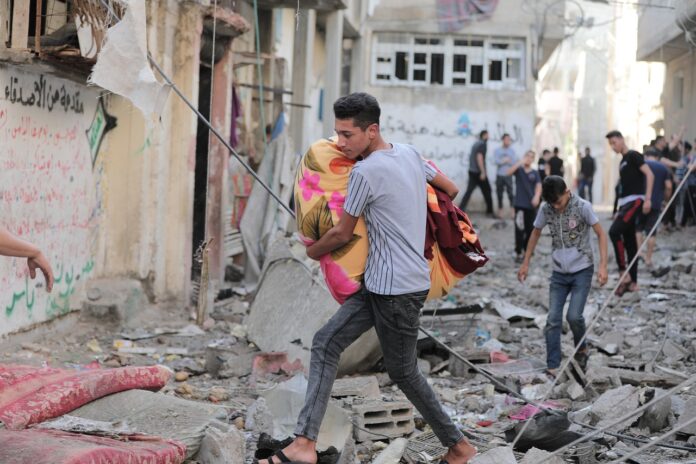
The Arab Spring
As the Arab spring we call a strong wave of protests and demonstrations that broke out on December 18, 2010 in Tunisia and then spread throughout North Africa and the Middle East. The protesters had social demands. They sought the overthrow of authoritarian regimes and social equality.
The reason for the outbreak of protests was given by an incident that happened on December 17, 2010 in the streets of the city of Sidi Bouzid in Tunisia when a police officer issued a fine to a twenty-six-year-old itinerant vegetable seller named Mohamed Bouazizi (s.s. for short Bouazizi), according to testimonies, she did not accept the amount offered to her by the itinerant vendor, which was also the official consideration set by law for these cases. In addition, the seller was verbally and physically abused by the authorities while he failed to get back what he had acquired that was unjustly kept from him.
Bouazizi as a sign of protest doused himself in gasoline and set himself on fire in the middle of a main street, outside the police station. He was then taken to the hospital where he recovered after eighteen days of struggle. Meanwhile, a number of protests had broken out in Tunisia as part of an effort to send a message against corruption.
The state responded with a show of force by carrying out a series of bloody attacks against the protesters.It is estimated that four hundred civilians lost their lives during the clashes. President Zine El Abidine Ben Ali of Tunisia tried to calm the tension that had built up in the streets of Tunisia when he visited Bouazizi in hospital, hoping he would deliver a message of peace. However, his attempt ended in failure.
Five thousand Tunisians attended Bouazizi’s funeral. Unable to handle the wave of protests that had been sparked, President Ben Ali announced his resignation and left power ten days later. The revolution also affected the surrounding countries.
After the outbreak of protests in Tunisia, uprisings against authoritarian regimes took place in Egypt, Bahrain and Yemen, while civil strife broke out in Libya. Major anti-regime protests also took place in Iran, Iraq, Algeria, Morocco, Jordan, and Oman, while smaller protests took place in Saudi Arabia, Mauritania, Lebanon, Kuwait, and Djibouti. Before the outbreak of the Arab Spring, Sudan was the only Arab country that had successfully overthrown dictatorial regimes in 1964 and 1985.
The expansion of the Arab spring in Syria
The uprisings that took place in the context of the Arab Spring spread to many countries of the Arab world, including Syria. In Syria, the people rose up against the country’s president, Bashar al-Assad. In the Syrian regime there is still a hereditary succession to power and thus the Assad family has been in power since 1971.
Unlike many Middle Eastern leaders, the Assad family does not follow extreme religious politics. So the revolutionaries did not rise up against some kind of extreme religious Muslim “caste”. Basharal-Assad, however, followed a strict policy which often resulted in the violation of basic fundamental rights of the citizens.
After the incident in Tunisia, anger towards any kind of state arbitrariness and oppression had spread to Syria through social networks. The people of Syria, along with other peoples had realized their need to react to the authoritarianism of the government. What was needed was a suitable occasion that would lead those Syrians who felt oppressed to express their discontent.
The occasion came in March 2011 when pro-revolutionary graffiti appeared on the walls of a Syrian school. The regime reacted by arresting fifteen underage boys who were held responsible for the appearance of this graffiti and accused of supporting the Arab Spring. The boys were tortured by the security authorities and one of them, 13-year-old Hamzaal-Khateeb, died after being severely beaten in detention.
As expected, there is an uproar inside Syria. The people respond with marches, demonstrations and other means to the arbitrariness of state power. President Bashar al-Assad, seeing the extent of the Arab Spring in other countries of the Arab world and the fall of the regime in Tunisia, responds to the uprisings with military force. Hundreds of people who were peacefully protesting were killed in cold blood, imprisoned and tortured by the Syrian army. Any protest marches and gatherings that broke out were dispersed by the Syrian military forces with the force of arms and those who resisted it ended up dead. Many citizens were forced to flee the country to avoid the tragic developments that were to follow.
Soon the reaction to the regime will also affect some of the ranks of the Syrian army. The soldiers who wanted the regime to fall came together and formed the Free Syrian Army. Soon the country would come face to face with the great civil war that was lurking.
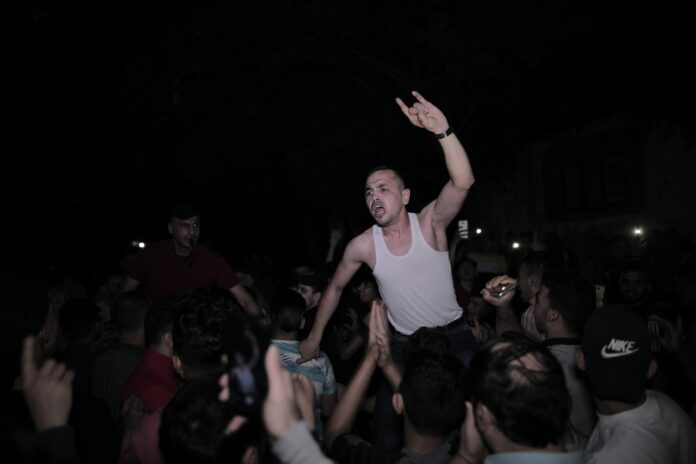
The effects of the Arab Spring in North Africa, the Middle East and Syria
The Arab Spring significantly shook the political systems of the countries in which it spread and paved the way for radical changes. Of course, few – to none – Arab countries had the opportunity to really escape from totalitarianism and become democratized.
The most typical example is Egypt. After the fall of the “hated” Hosni Mubarak, the army overthrew the vetted president Mohamed Morsi in the summer of 2013 and imposed a military dictatorship with fascist characteristics that led to the abuse and death of thousands of Egyptians.
In Syria, the Arab Spring resulted in the outbreak of a bloody civil war that continues to this day, taking on terrible proportions. Millions of Syrians have since the beginning of the civil conflict been internally displaced or migrated to other countries while the massacres of Syrian civilians continue systematically.

